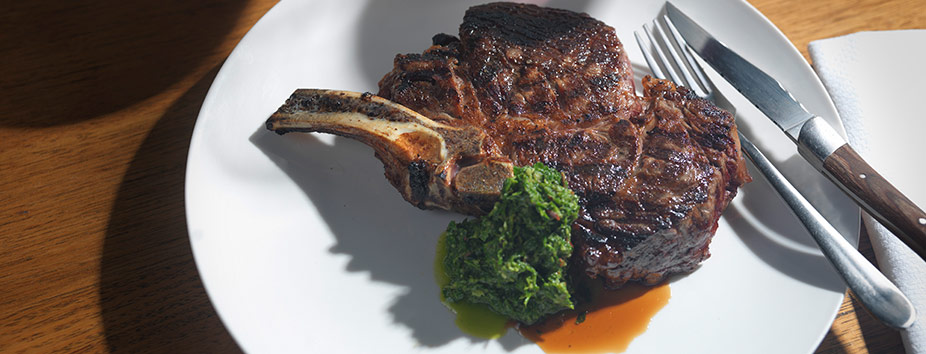Paddock to plate to palate

Do contented cows produce tastier meat? Discerning diners who represent the driving force behind the ‘paddock to plate’ philosophy say yes.

Do contented cows produce tastier meat? Discerning diners who represent the driving force behind the ‘paddock to plate’ philosophy say yes.
Words: Jill Frazer
Diners are increasingly embracing the 'paddock to plate' concept, desiring to know all the production-chain elements of the meat on their plates so they can make informed decisions about what they eat.
'Paddock to plate' is part of the fresh food revolution. Eating is no longer just about viewing food on a plate in isolation; it's a holistic experience that extends beyond the table and the kitchen.
The 'paddock to plate' philosophy incorporates mounting emphasis on taste, nutrition, value, freshness, sustainability and animal welfare.
Kingsleys Steak & Crabhouse, which has operations in Sydney and Brisbane, caters for this expanding group of conscious consumers and diners with discerning palates.
Lars Svensson, Group Executive Chef of Kingsleys Restaurant Group, is adamant that happy and placid animals translate to a quality cut of meat.
"When we source our beef we want to know who the farmer is, the region the farm is in, and the breed of the cattle-because all of that impacts the integrity of the animal and the quality of the meat, and our customers want to know those details," he says.
Former Managing Director Kingsley Smith, who founded his eponymous restaurants about 20 years ago, introduced the 'paddock to plate' concept to his steak and crab houses with regular and popular 'paddock to plate' nights. These nights attract food-lovers who want to eat produce from suppliers that adopt a quality-and-care philosophy each step of the way.
Svensson says questions about farming methods and the cattle's breed and diet, particularly the differences between pasture-fed and grain-fed steaks, are common on these nights.
"We have a wide range of steaks on our menu that cater for all choices and tastes," he says. "We serve both pasture-fed and grain-fed, as they have very different qualities because the cattle eat differently."
Pasture-fed cattle has a more predominant beef flavour, which is "slightly stronger in taste and usually has finer fibre and therefore more texture". Grain-fed cattle produces more marbling in the meat, which is the intramuscular fat that breaks down the fibres and makes the meat moist when cooked.
"Each muscle has different characteristics," Svensson explains. "People who go for T-bone and rump tend to like the pasture-fed meat because they like a stronger flavour and prefer to chew a bit."
Svensson believes that animal welfare issues and reality TV cooking shows are both partly responsible for fuelling the public's increased focus on healthy eating and greater interest in what's on the plate and where it's come from.
"People are very inquisitive now," he says. "We tell them that reducing the factors that create stress is important for cattle. If cattle get angry and upset, later on in the cycle that turns their meat tough and affects the flavour.
"We like cool-climate beef," Svensson adds. "The Southern Tablelands area (southern NSW and northern Victoria) is good because the region gives slower growth in the cattle, which makes a more consistent product. Weather can cause havoc with pasture-fed beef."
Kingsleys has fostered a close relationship with its wholesalers and farmers, and Svensson makes a point of visiting farms on a regular basis.
"The bottom line is that what happens on the farm really shows in the quality of the meat," he says.
"If customers started complaining, we would know immediately that the cattle were unhappy or stressed. It would miss the mark in the quality of the meat. "
"The success of the Kingsleys brand for two decades is due to customers returning, knowing they always get what they want. And what they want is consistent quality, which comes from our policy to select the best pasture-fed and grain-fed products in collaboration with our wholesalers and farmers."